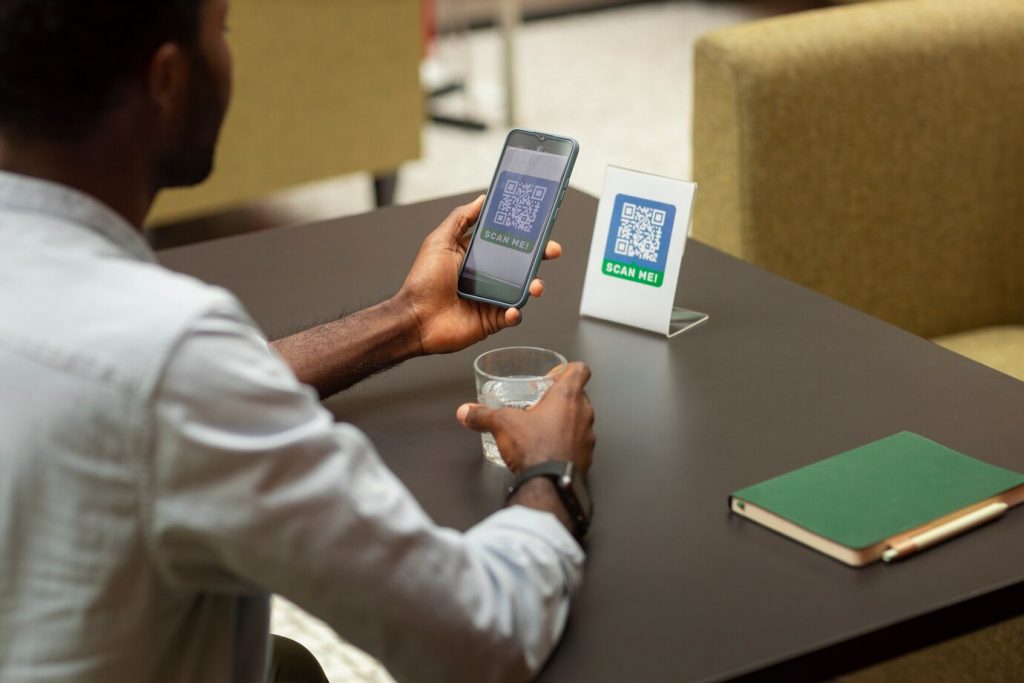Retail theft and shrinkage are persistent issues that affect profitability and efficiency in the retail sector. To effectively combat these challenges, retailers need to implement a variety of innovative solutions. These solutions not only deter theft but also streamline operations and enhance overall security. Here are some key strategies, explained in detail
Advanced Surveillance Systems
Modern surveillance systems have become indispensable in retail environments. High-definition cameras provide clear and detailed footage, capturing every corner of the store. These systems are often equipped with real-time monitoring capabilities, allowing security personnel to keep an eye on activities as they happen. Advanced analytics can identify suspicious behavior, such as loitering or unusual movement patterns. Remote access features enable managers to monitor the store from anywhere, ensuring constant vigilance. By deterring potential thieves and providing evidence for investigations, advanced surveillance systems significantly enhance security.
RFID Technology
Radio Frequency Identification (RFID) technology is transforming inventory management and theft prevention. RFID tags are attached to merchandise and emit signals that can be tracked in real-time. This technology offers precise location data, making it easier to monitor inventory levels and quickly locate missing items. By providing real-time visibility into stock levels, RFID minimizes the risk of theft and improves overall inventory accuracy. Additionally, RFID can streamline stock management processes. This reduces the time and effort required for manual inventory counts and allowing for more efficient restocking and merchandising.
Employee Training Programs
Investing in employee training programs is crucial for effective loss prevention. Well-trained staff can recognize and respond to suspicious activities, significantly reducing the risk of theft. Training should cover various aspects of theft prevention, including how to spot potential shoplifters, handle suspicious behavior, and engage with customers in a way that discourages theft. Customer service skills are also important, as attentive and helpful employees can deter thieves. Regular training updates ensure that staff stay informed about the latest security practices and techniques, creating a proactive and vigilant workforce.
Smart Shelving Systems
Smart shelving systems are an innovative solution for managing inventory and preventing theft. These systems use sensors to monitor stock levels in real-time. If items are removed without authorization, the sensors trigger immediate alerts, allowing staff to respond quickly and prevent theft. Smart shelves also improve inventory accuracy by providing continuous monitoring and data collection. This helps maintain optimal stock levels, reducing the likelihood of out-of-stock situations and enhancing customer satisfaction. By integrating smart shelving systems, retailers can achieve better control over their inventory and minimize losses.
Customer Behavior Analytics
Analyzing customer behavior through data analytics tools provides valuable insights that can help prevent theft. These tools track in-store movements and identify patterns or anomalies that may indicate suspicious behavior. For example, customers who frequently pick up and put down items or spend an unusual amount of time in certain areas might be flagged for closer observation. By proactively addressing these behaviors, retailers can prevent theft before it occurs. Additionally, understanding customer behavior can improve the overall shopping experience, as retailers can optimize store layouts and product placements to better meet customer needs and preferences.
Electronic Article Surveillance (EAS)
Electronic Article Surveillance (EAS) systems are a well-established method for preventing theft in retail environments. EAS systems use electronic tags attached to merchandise. If an item is removed from the store without the tag being deactivated or removed, an alarm is triggered at the store exit. This visible deterrent discourages potential thieves and provides immediate alerts to staff. EAS systems can be customized to focus on high-risk items, such as expensive electronics or designer clothing, making them a versatile and effective tool for loss prevention. By integrating EAS systems, retailers can enhance security and protect valuable merchandise.

Collaboration with Law Enforcement
Collaborating with local law enforcement can significantly enhance retail security measures. Establishing a partnership with law enforcement agencies allows retailers to benefit from their expertise and resources. Law enforcement can provide valuable insights into local crime trends and help develop effective prevention strategies. Joint efforts between retailers and law enforcement create a safer shopping environment and ensure a swift response to theft incidents. Regular communication and coordination with law enforcement can also lead to more successful investigations and prosecutions, further deterring criminal activities in retail spaces.
Mobile Security Applications
Mobile security applications offer a versatile and convenient solution for enhancing real-time monitoring and response capabilities. These apps provide store managers with immediate alerts, enabling them to monitor surveillance systems remotely and access security protocols quickly. Mobile apps can also integrate with other security systems, such as alarms and access controls, allowing for a comprehensive approach to loss prevention. By improving response times and ensuring swift action against theft, mobile security applications help retailers maintain a secure environment. The flexibility and accessibility of mobile apps make them an essential tool for modern retail security.
Biometric Authentication
Biometric authentication technology, such as fingerprint and facial recognition, offers advanced security measures for retail environments. These methods secure access to sensitive areas, such as stockrooms and offices, preventing unauthorized entry. Biometric systems are highly reliable and accurate, reducing the risk of internal theft and ensuring that only authorized personnel can access restricted areas. Implementing biometrics enhances overall security and helps protect valuable assets. Additionally, biometric systems can be used for employee timekeeping and attendance, further improving operational efficiency and accountability.
Inventory Audits
Regular inventory audits are essential for identifying discrepancies and ensuring inventory accuracy. Audits should be thorough and frequent, covering all aspects of inventory management, including stock levels, order accuracy, and potential losses. By conducting regular audits, retailers can quickly identify and address any issues, minimizing shrinkage and improving accountability. Effective audits also help maintain accurate records, which are crucial for making informed business decisions. Implementing a robust audit process ensures that inventory remains well managed and reduces the likelihood of losses due to theft or administrative errors.
Store Layout Optimization
Optimizing the store layout is another key strategy for reducing theft. A well-organized layout with clear sightlines allows staff to monitor activities more effectively. Strategic product placement, particularly for high-value items, enhances security by positioning these items in areas with better visibility or closer to staff. Additionally, a logical and intuitive store layout improves the shopping experience for customers, making it easier for them to find products and navigate the store. By designing a layout that balances security and customer convenience, retailers can reduce theft opportunities and create a more enjoyable shopping environment.
Community Engagement Programs
Engaging with the community through local initiatives can have a positive impact on retail security. By participating in community programs and building relationships with local residents, retailers foster a sense of responsibility and trust. Community engagement raises awareness about theft prevention and encourages local residents to be vigilant and report suspicious activities. Retailers can also collaborate with community organizations to host events and workshops on safety and security, further strengthening community ties. A strong community connection creates a safer shopping environment and benefits both retailers and customers.
Digital Receipts
Digital receipts offer a modern solution for improving transaction accuracy and reducing return fraud. Unlike paper receipts, digital receipts are harder to forge and provide better tracking of purchases. Customers can receive receipts via email or mobile apps, making it easier to manage and retrieve proof of purchase. Digital receipts also contribute to environmental sustainability by reducing paper waste. By implementing digital receipt systems, retailers can enhance overall efficiency, improve record keeping, and reduce the risk of fraudulent returns.
Mystery Shoppers
Mystery shoppers provide an unbiased evaluation of store security measures and staff performance. These undercover customers visit the store and assess various aspects of security, including compliance with protocols, staff vigilance, and potential vulnerabilities. Their reports highlight areas that need improvement, allowing retailers to address issues promptly. Mystery shoppers also ensure that employees adhere to security procedures and provide consistent customer service. By incorporating mystery shopper evaluations into their security strategy, retailers can identify and mitigate risks, creating a safer shopping environment.
Self-Checkout Monitoring
Self-checkout systems, while convenient, can be vulnerable to theft if not properly monitored. Surveillance cameras should cover self-checkout areas to deter fraudulent activities and provide evidence in case of theft. Staff should also be available to assist customers and monitor transactions, ensuring that all items are scanned and paid for correctly. Enhanced oversight of self-checkout systems reduces the risk of theft and ensures smooth checkout processes for customers. By balancing convenience and security, retailers can offer a positive shopping experience while minimizing losses.

Data Encryption
Protecting sensitive information through data encryption is vital for maintaining the integrity of retail operations. Retailers handle a significant amount of customer and internal data, including payment information, personal details, and inventory records. Encrypting this data prevents unauthorized access and safeguards it from breaches. Secure systems ensure that only authorized personnel can access sensitive information, reducing the risk of data theft and fraud. Implementing strong cybersecurity measures, including data encryption, is essential for protecting both customer and company information and maintaining trust in the retail brand.
Product Tagging
Effective product tagging is a simple yet powerful tool for deterring theft. Tags can be either visible or concealed, making stealing more difficult for potential thieves. Visible tags act as a deterrent by signaling that the item is protected, while concealed tags can catch thieves off guard when alarms are triggered at exits. Tagging high-risk items, such as electronics, cosmetics, and designer goods, is particularly critical. Combined with surveillance and EAS systems, product tagging provides an additional layer of protection against theft, helping retailers safeguard their merchandise.
Customer Awareness Campaigns
Raising customer awareness about security measures through informative campaigns can deter potential thieves. By informing customers about theft prevention efforts, such as surveillance systems, RFID tagging, and EAS alarms, retailers create an environment where thieves are less likely to target. Awareness campaigns encourage customers to be vigilant and report suspicious activities, creating a sense of shared responsibility for store security. Engaged and informed customers contribute to a safer shopping environment, enhancing overall security and reducing the risk of theft.
Store Policies and Procedures
Clear and well-communicated store policies and procedures are essential for effective loss prevention.
Adopting advanced technologies and effective strategies can significantly reduce retail theft and shrinkage, improving security and boosting profits. These comprehensive measures create a safer and more efficient shopping experience for both retailers and customers.
